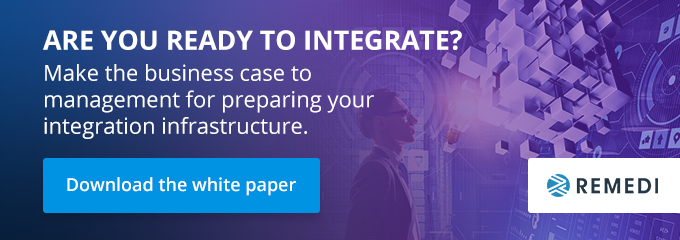
Are you trying to make the business case for modernizing your B2B integration system to the C-suite? While you have a firm technical understanding of why B2B integration modernization is crucial for your firm, it can sometimes be challenging to explain to decision makers why this matters so much.
The C-suite needs to understand how modern EDI solutions can help your organization be more productive, efficient, and cost-effective. Read on to learn about how the top two drivers of B2B integration can help you convince decision makers this is the right choice for your firm.
The Two Drivers of B2B Integration Modernization
There are two drivers of B2B integration modernization:
- Cumulative drivers
- Disruptive drivers
We’ll explain what these two drivers are in greater detail in the next sections.
Cumulative Drivers
“Cumulative drivers” refer to recurring activities whose effect over time creates a negative impact on your business. Here are some examples of cumulative events:
- Incorrect shipments
- Invoicing errors
- A slow response to customer change requests (because requests are submitted manually, and responses are manual, too)
Over time, your company will see such negative effects as:
- Customer charge-backs
- High product return rates
- Mediocre or poor ratings
Modern EDI helps you avoid these problems by automating processes such as advance ship notices, invoicing, and acceptance of customer change requests. Not only will this save you money because you’ll avoid charge-backs and returns, but it will also enhance your reputation and improve your customer retention rates.
Disruptive Drivers
The biggest difference between cumulative drivers and disruptive drivers is that you can take proactive steps to mitigate the effect of cumulative drivers, whereas disruptive drivers leave you in a very reactive position.
Disruptive drivers tend to be external forces that have serious consequences if you don’t make needed changes. Here are some examples of disruptive drivers:
- Mergers/acquisitions
- Large account sales
- Platform or application replacements
When disruptive drivers rear their heads, you can’t afford to ignore them. A merger or acquisition means that you have to start doing things the way your new partner or parent company does them, while a large account means that you have to handle more data than is possible to manually. Also, sometimes a platform or application reaches the end of its life—the manufacturer simply won’t support these systems anymore.
Making the Argument for B2B Integration Modernization
To make an effective argument for B2B integration modernization, you have to understand how modern EDI aligns with business goals. As it happens, the relationship between business goals and B2B integration is fairly clear.
Both cumulative and disruptive drivers negatively affect business goals (which are to run a company in an efficient, cost-effective way, with productive employees). Over time, the cumulative drivers can create a negative situation in which you have dissatisfied customers and a poor reputation, while disruptive drivers are more sudden events that usually expose thinly-veiled inadequacies. Ultimately, both leave your company in a less-than-desirable place.
“Cumulative and disruptive drivers negatively affect business goals.”
By understanding how C-suite leaders think, you can make an effective argument for B2B integration modernization. Are You Ready to Integrate?




